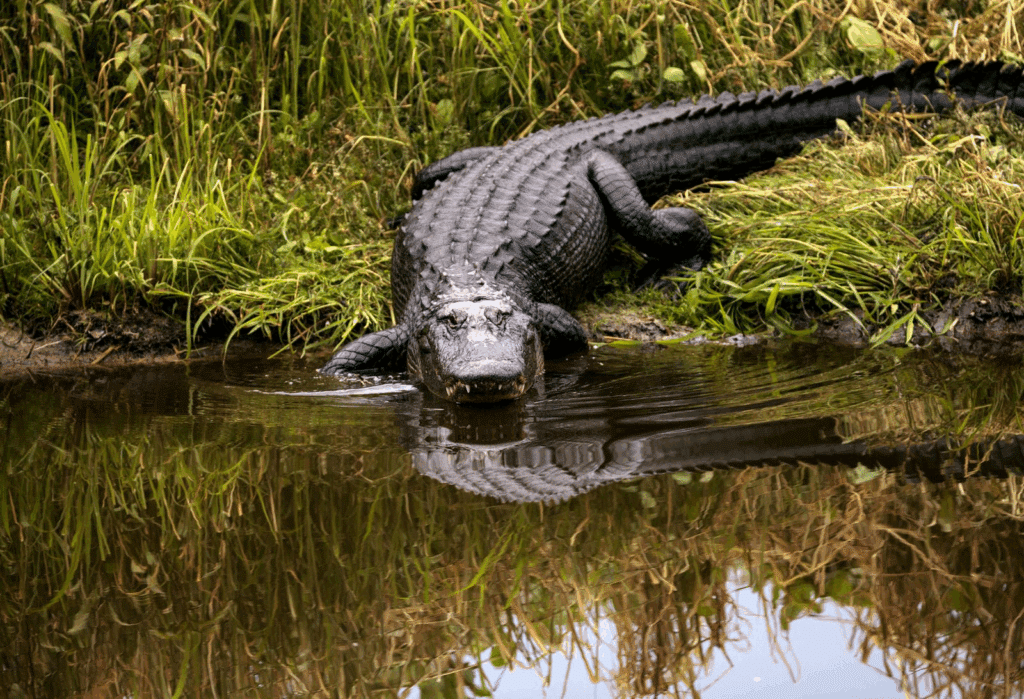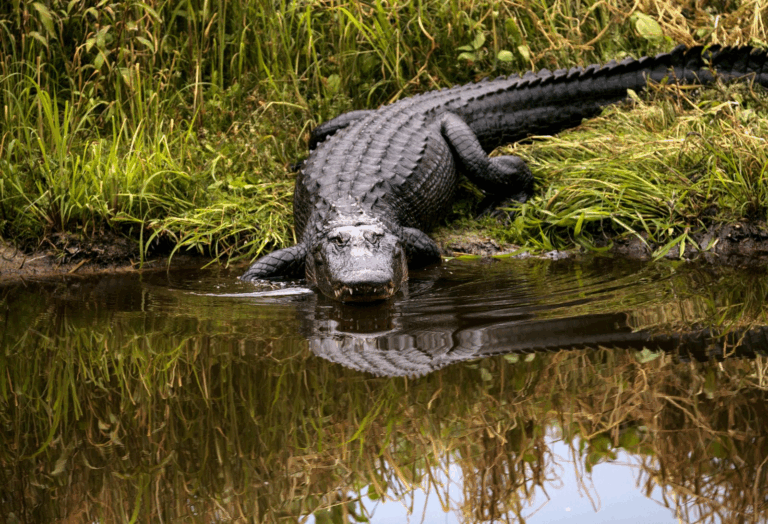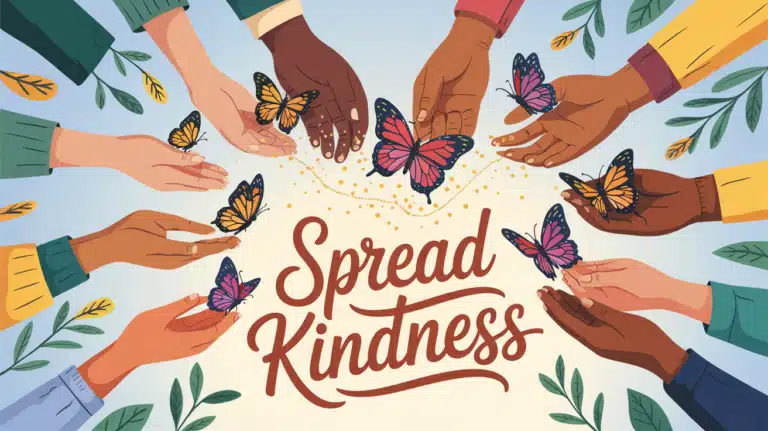Green alligators are a lie. Have you been fooled your whole life? From toys to movies, we see these creatures painted bright green. But walk up to a real alligator (not too close!), and you’ll spot something totally different.
The color confusion has spread through books, cartoons, and even some nature shows. It bugs me when facts get twisted, and this mix-up is bigger than most people think.
Real alligators rock a sleek black or dark gray coat with light undersides. Their color helps them hunt, stay warm, and survive in the wild.
The green myth? It comes from media shortcuts and confusing them with their crocodile cousins. Let’s fix this mistake together and learn what these amazing animals truly look like.
The Truth Behind Alligator Colors
Alligators aren’t just one color—they come in shades like dark green, gray, olive, brown, and even black. Their color helps them blend into their environment so they can hide from predators and sneak up on prey.
Baby alligators look different from adults. When they hatch, they have bright yellow and black stripes, which help them stay safe in tall grass and shadows. As they grow older, these stripes fade, and their skin turns much darker, usually dark gray or black, to help them hide in murky water..
Where an alligator lives also affects its color. Alligators in clean, clear water might look lighter, while those in swampy, muddy areas can look almost black.
Sometimes, algae in the water make their skin look greener, and tannins from trees can make them darker. Rarely, some alligators are born white (albino) or very dark (melanistic) because of special genes.
So, alligator colors aren’t just for looks—they help these amazing reptiles survive in the wild!
Environmental Impact on Alligator Color
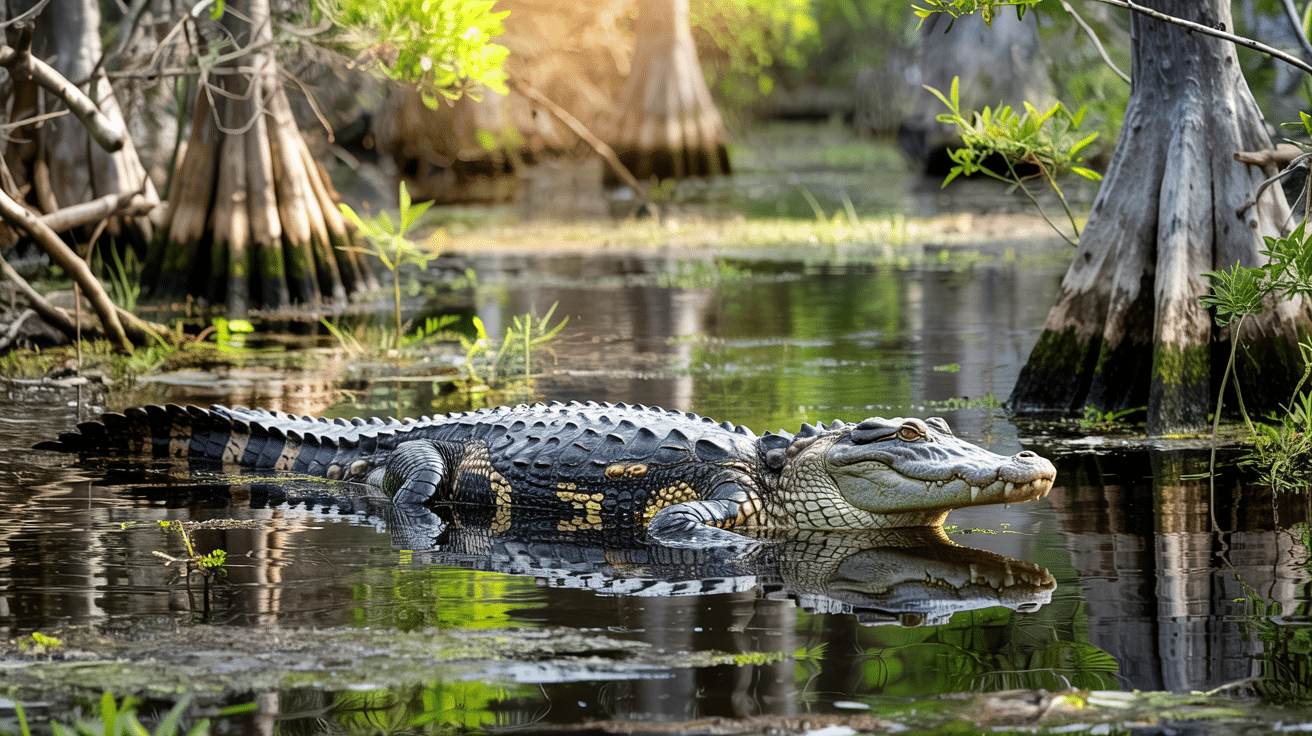
Alligator color isn’t just about genes—it’s shaped by their surroundings. Their skin can change over time to match their habitat, helping them survive.
Light and Habitat:
Alligators in light areas (like sandy shores) often become lighter. In dark, muddy swamps, their skin turns darker.
These changes can happen in months and reverse if their environment changes, helping them hide from predators or hunt prey.
Water and Plants:
- Clear water: Alligators look lighter or grayish.
- Tannin-rich water (from rotting leaves): Skin darkens to near-black.
- Algae-covered water: Skin may look greener as algae stick to it.
Sunlight and Heat:
In sunny areas, darker skin helps absorb heat to stay warm. In shaded spots, lighter colors prevent overheating and improve camouflage.
Location Matters:
- Cold climates (like northern regions): Alligators lose baby stripes faster and turn darker as adults to stay warm.
- Warm climates (like the southern U.S.): Adults stay slightly lighter, blending into sunlit marshes.
Color changes help alligators stay hidden, regulate body temperature, and survive in different habitats. Nature’s perfect camouflage
Alligators vs. Crocodiles: What’s the Color Difference?
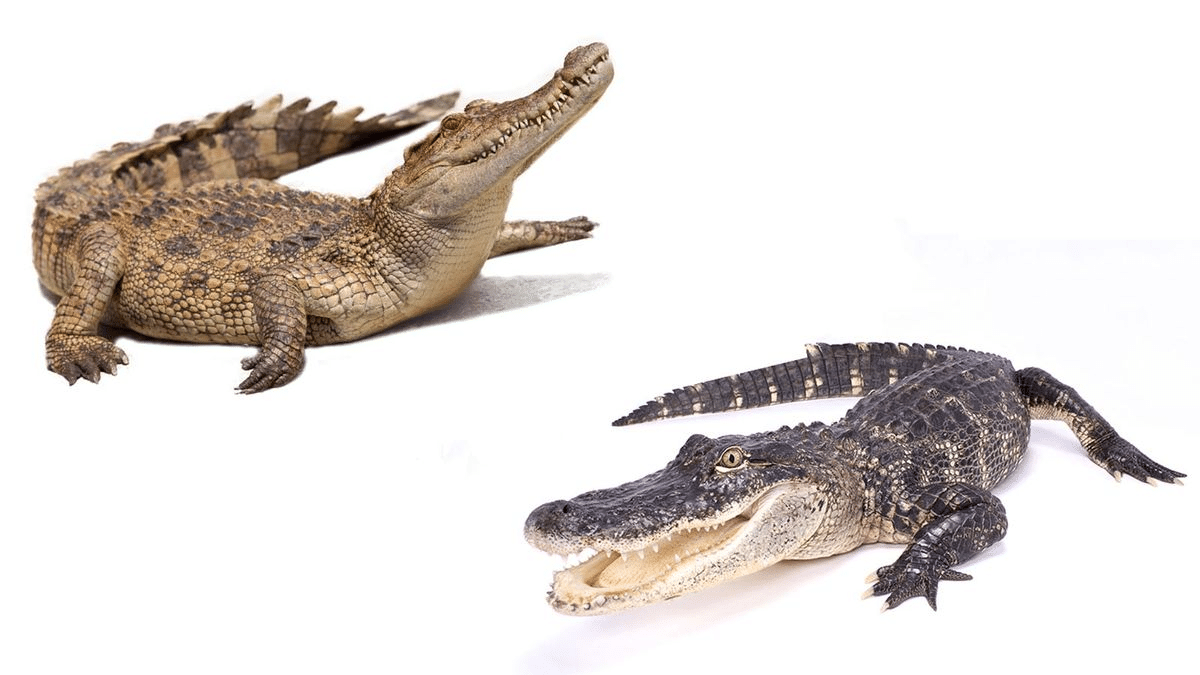
Alligators and crocodiles might look alike, but their colors are quite different! Here’s a quick breakdown of the key color differences:
Alligator Color
Alligators are typically dark in color, ranging from dark gray to brown and even black. Their undersides are lighter, usually cream or pale yellow.
Alligators living in waters rich in algae might appear green, but this is not their true color—it’s just algae growing on their skin. Their dark colors help them blend into freshwater habitats like swamps and rivers.
Crocodile Color
Crocodiles are generally grayish-green or a lighter shade of brown. Their skin is often coated with algae, which can make them look greenish, but their natural color is lighter than that of alligators.
Crocodiles are mostly found in saltwater or brackish water, so their lighter colors help them blend in with coastal environments.
Key Color Differences
- Alligators: Darker shades like gray, brown, or black, with a lighter underside.
- Crocodiles: Lighter shades, typically grayish-green, and a more noticeable green hue due to algae.
- Habitat Impact: Alligator colors are suited for freshwater habitats, while crocodiles’ colors help them blend into saltwater or brackish environments.
In short, alligators are darker, and crocodiles are lighter with a greenish tint! Their color is a big clue in helping you tell them apart.
Why Do Alligators Appear Green in Media?
Alligators in movies, books, and TV shows are often bright green. But real alligators are black or dark gray with light bellies.
- The Media Mix-Up: This green color comes from a simple mix-up. Many people confuse alligators with crocodiles, some of which have greener tones. Movies and cartoons made this mistake popular.
- Visual Appeal: Green stands out better on screen. Filmmakers choose bright colors to make animals easy to see. Famous cartoon alligators like Wally Gator set this trend years ago.
- A Hint of Truth: Some alligators in algae-filled waters can get a green coating. This isn’t their skin, but plants growing on them. From far away, this might look like green skin.
- Children’s Books Effect: Kids’ books use bright green to make alligators easy to spot on the page. These early images stick in our minds as we grow up.
- Fixing the Mistake: Modern nature shows now show real alligator colors. Zoos and teachers help correct this old error. But the green image remains strong in our culture.
- The Reality: Real alligators have dark skin that helps them soak up the sun and hide while hunting. Their true colors serve real purposes in nature.
Next time you see a green alligator in a cartoon, you’ll know the truth about these amazing animals!
Fun Facts About Alligator Colors
- Algae Can Make Them Look Green: Alligators don’t naturally have green skin. However, when they live in algae-rich waters, they can appear green because algae grow on their skin. This is just a temporary look, not their true color!
- Juvenile Alligators Have Stripes: Baby alligators often have light-colored stripes running along their sides. As they grow, these stripes fade and are replaced by darker tones, like gray or brown.
- Winter Changes: Alligators can change their appearance during the winter. When they go into a state called brumation (similar to hibernation), they become less active, and their skin might appear paler or covered with algae.
- Habitat Affects Their Color: The color of an alligator can be influenced by the water they live in. Tannic waters, which are filled with natural acids from plants, make alligators appear darker, while clearer waters might give them a lighter look.
- Color Helps with Camouflage: Alligators’ dark colors help them blend into their swampy or river environments, keeping them hidden from predators and making them better hunters. Their lighter undersides also help them stay less visible when swimming under the water’s surface.
- Older Alligators Are Darker: As alligators age, their color tends to darken. Older alligators usually have a more blackish-brown appearance compared to younger ones, which may be lighter or have visible stripes.
- Unique Alligator Patterns: Some alligators are born with unique skin patterns or colors, making each one different! These patterns can range from unusual markings to slightly different shades of gray and brown, making them look unique in the wild.
These fun facts show how alligators’ colors can change based on their age, environment, and even the time of year!
The Bottom Line
So there we have it – alligators aren’t the bright green creatures shown in cartoons and toys. They’re actually black or dark gray with lighter undersides. This color serves them well, helping them absorb heat and stay hidden while hunting.
Media representations have shaped our perceptions, but knowing the truth helps us appreciate these animals for what they really are.
Next time you see an alligator in a zoo or wildlife show, take a good look at its true colors. You’ll notice how its dark skin works perfectly in its environment.
What other animals might look different from how they’re portrayed in media? I’d love to hear your thoughts in the comments below.
And if you found this interesting, check out our other articles about wildlife misconceptions!


